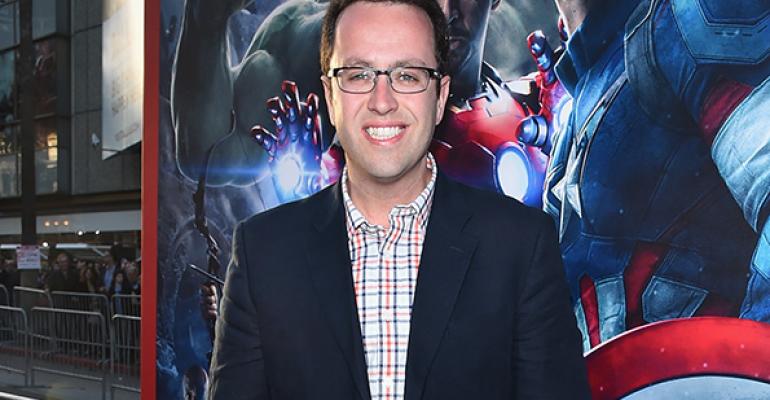Negative headlines about former Subway spokesman Jared Fogle highlight the need for all restaurant brands to put a crisis management plan in place before a crisis hits, according to marketing experts.
Subway suspended its relationship with Fogle Tuesday after state and federal police raided his home near Indianapolis. The investigation is believed to be related to the arrest earlier this year of Russell Taylor, the former executive director of nonprofit organization The Jared Foundation, on charges of possessing and producing child pornography.
Although Fogle has been cooperating with police and has not been charged with any crime, Subway said the decision to part ways was mutual.
That separation was a smart move, said Jeff Fromm, marketing strategy consultant and president of FutureCast.
“There’s nothing for Subway to gain and everything to lose,” Fromm said.
In a crisis, collecting data is a good first step to fully understanding how consumer perceptions might be impacted, he said.
When mature brands like Subway face crisis situations, there are four key drivers of brand awareness that should be considered in any moves going forward: authenticity, innovation, differentiation and purpose.
“A crisis for a brand that’s mature is different from a brand that’s not mature,” Fromm said. “Consumers already know this brand. So Subway should look at the consumer impact on those four things that have real impact. Mature brands have to look through this lens.”
Laurel Kennedy, principal of crisis management firm Blink, which specializes in food channels, said Subway needs to redirect media attention to something that positively reflects the brand values, such as food quality or freshness.
Part of managing a crisis is plotting the recovery, and that may mean being ready to pivot quickly to change the conversation.
“In this case, they might look at lining up another campaign and pulling the trigger quickly,” Kennedy said.
It’s too soon to gauge the impact the Fogle news will have on Subway, she said.
“It will definitely reflect on Subway, but to what degree we don’t know,” Kennedy said.
Losing Fogle will be a blow, she said.
The formerly 425-pound Fogle began appearing in Subway ads in 2000, after a story in Men’s Health magazine revealed that he lost 245 pounds by eating turkey and veggie subs, calling it “the Subway Diet.”
Often photographed holding his enormous former pair of pants, Fogle was a unique spokesman for the brand in that he was a celebrity because of Subway. Most brand ambassadors are celebrities for other reasons and bring their fame to the brand.
“It’s unusual when someone surfaces almost organically, as he did, and truly embraces the brand,” Kennedy said. “That carried Subway for 15 years with a very positive story. Subway was light years ahead, thanks to him, on a lot of issues around nutrition and calorie counts.”
Although the incident highlights the inherent dangers of choosing a brand ambassador who becomes the face and voice of a brand, Kennedy said the marketing practice won’t go away.
“Companies use brand ambassadors and employ celebrity spokespeople because they are effective,” she said. “The fact of the matter is people respond to people. There’s nothing more authentic than a person speaking from the heart.”
Still, there is a lesson, Kennedy added.
“Companies should make sure they do their due diligence, and they should write strong morals clauses into contracts so they have more latitude if situations like this come up,” she said.
Even if Fogle comes out clean from the situation, the damage has already been done, Kennedy said.
“Thanks to the Internet, the halo is a long-term phenomenon now,” she said. “It never fully goes away.”
Contact Lisa Jennings at [email protected].
Follow her on Twitter: @livetodineout

